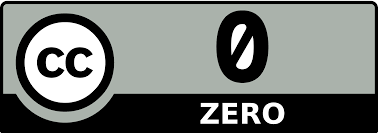415HZ – BAROQUE PITCH “STANDARD”
Baroque music is a style of Western art music composed from approximately 1600 to 1750. The most popular Temperament of that era was Equal Temperament, but various composers did experiment with other Temperaments as well, J. S. Bach for example wrote The Well-Tempered Clavier to demonstrate the musical possibilities of well temperament.
Only since the invention of the Tuning Fork in 1711 (late Baroque period) by trumpeter John Shore there was an easy reference tool for setting the pitch. Old historical pitch forks provide now physical references to the various pitches used in the past globally. Edward E. Swenson made a list with old historical tuning forks that have been preserved.
According to various sources (including Wikipedia, www.baroque.org, Philharmonia Baroque Orchestra, et cetera) A4=415Hz was the pitch “standard” used for Baroque music during it’s era, roughly a semitone lower than the modern standard concert pitch of A4=440Hz (440Hz -100 cents = 415.3046975799438Hz). An accepted exception is for French baroque repertoire, which is often performed with A4=392Hz, approximately a semitone lower again.
A high Concert Pitch would require high tension on strings of chordophone (string) instruments (the main instrument group for Baroque music). High-pitched strings vibrate faster, generating brighter but “thinner” sound. The low 415Hz pitch generated a warmer, fuller tone relative to other (higher) pitches used around that time. Another reason mentioned for using a low pitch was related to the design of a characteristic Baroque instrument used: the Harpsichord. This instrument was entirely made from wood. If the tension on the strings would be set too high, the pressure on the wood-work could “deform” the instrument.
One of the reasons why 415Hz as Concert Pitch was used during the Baroque era was related to the desired timbre and the design of the instruments used. But, not only classical composers and musicians were aware of the change of timbre. In the more resent history some great artists have tuned their instruments a semitone down to change the timbre of their instrument while still being compatible with the 440Hz standard. One of these artists that used the “Baroque Pitch” was Jimi Hendrix. Another famous band that applies that does pitch their instruments a semitone down, is U2. Some guitarists and bassists refer to it as “E♭ (E‐flat) tuning or D♯ (D‐sharp) tuning“.
SHOULD YOU USE CONCERT PITCH A4=415HZ?
It is important to keep in mind that the change of tonality AND timbre by lowering the pitch with a semitone, does work with acoustic and electric (amplified) instruments best. Strings for example oscillate with a lower pitch at a lower rate and the body of the instrument would thus vibrate and resonate with this lower rate as well.
If you want to perform the work of for examle Jimi Hendrix or U2, or perform the work of the great classical composer from the Baroque era, then it would be a logical decision to use this Concert Pitch.
With electronic instruments or sampled / recorded material ONLY the tonality would change (A4=415Hz would now simply sound pretty much the same as the Ab would sound if A4=440Hz would have been used). Yes, the whole piece of music would sound a semitone lower (and that could slightly effect the overall room sound a bit different due to the response of the acoustic of the surrounding space), but the timbre would not really change and that is what the changing of pitch is mostly about.

